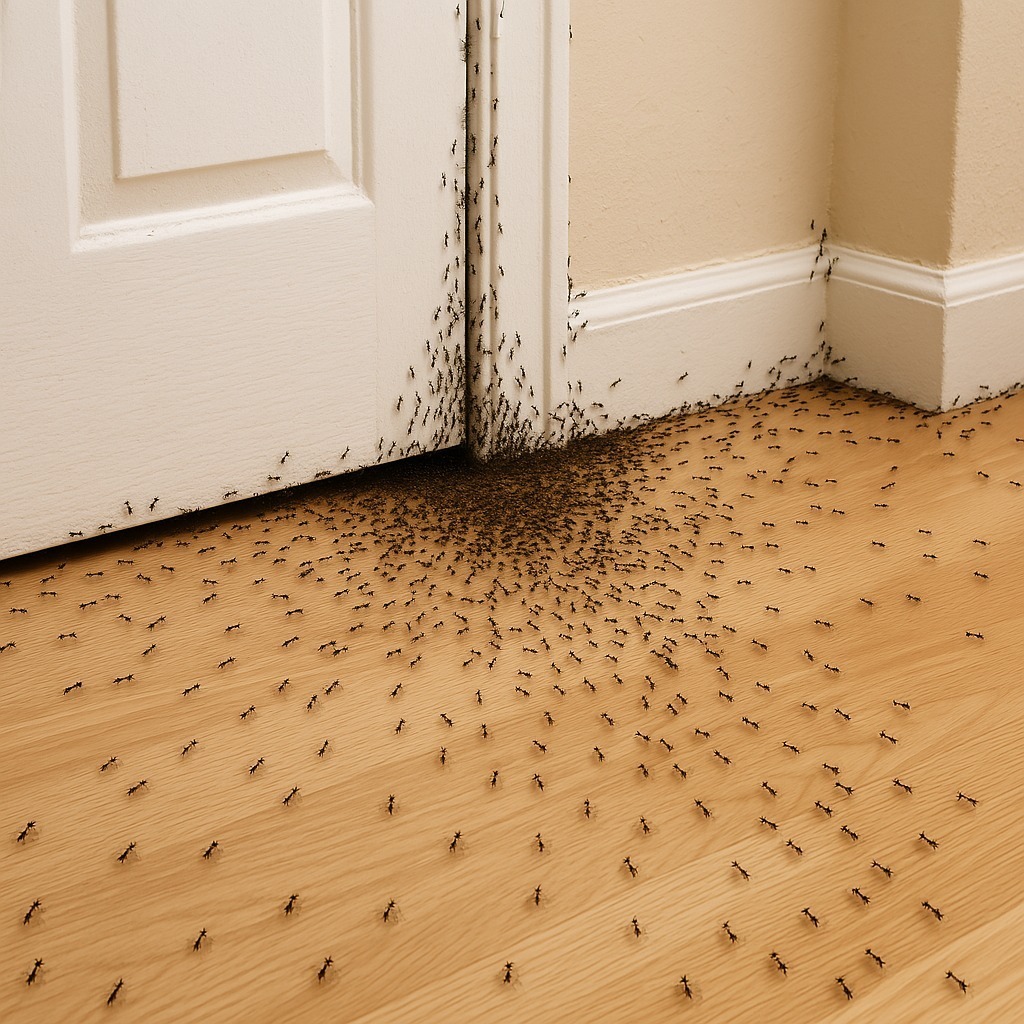ADVERTISEMENT
#### **4. Argentine Ants**
Argentine ants are aggressive and form large supercolonies that can span vast areas. These ants are highly adaptable and can invade homes in search of food, water, and shelter. They are known for their ability to outcompete other ant species, which can lead to large infestations.
#### **5. Sugar Ants**
Sugar ants, also known as sweet ants, are attracted to sugary substances like honey, candy, and syrup. These ants are small and light-colored, and they can quickly form large trails if a food source is left out in the open. They are typically harmless but can be a nuisance in kitchens.
—
### **How to Get Rid of Ants**
If you’ve noticed ants in your home, it’s important to act quickly to prevent them from becoming a more significant problem. Fortunately, there are several ways you can get rid of ants without the need for harsh chemicals or professional pest control services.
#### **1. Identify and Eliminate the Food Source**
The first step in eliminating ants is to identify and eliminate the food source that’s attracting them. Clean up crumbs, spills, and food wrappers, and make sure that food is stored in airtight containers. Keep counters and floors clean, and wipe down surfaces to remove any food residue that might attract ants.
#### **2. Seal Entry Points**
Ants enter your home through cracks and crevices in walls, windows, doors, and foundations. Seal any visible entry points to prevent more ants from coming inside. Use caulk to fill gaps in windows and doors, and repair any damaged seals around vents or pipes.
#### **3. Use Natural Repellents**
There are several natural ingredients you can use to repel ants and discourage them from entering your home. Some popular options include:
– **Vinegar:** Ants dislike the smell of vinegar, and it can be used to wipe down surfaces where ants are seen. A mixture of vinegar and water in a spray bottle can be an effective natural repellent.
– **Cinnamon:** Ants are deterred by the smell of cinnamon, so sprinkling cinnamon powder in areas where ants are active can help drive them away.
– **Lemon:** The acidity in lemons can disrupt ant pheromone trails, making it harder for ants to navigate. Squeeze fresh lemon juice around windowsills and entry points.
#### **4. Use Ant Baits**
Ant baits are another effective method for controlling ants. These baits contain a substance that attracts ants, which then carry the bait back to the colony. Over time, this can eliminate the colony as the ants spread the poison to the queen and other members of the nest.
#### **5. Call a Professional**
If your ant problem persists or if you’re dealing with a particularly aggressive or destructive species like carpenter ants, it may be time to call a professional pest control service. They have the tools and knowledge to eliminate the ants and prevent future infestations.
—
### **Preventing Future Ant Infestations**
Once you’ve successfully dealt with an ant problem in your home, the next step is to take preventative measures to ensure they don’t come back. Here are some tips to keep ants at bay:
– **Keep your home clean** by regularly sweeping, vacuuming, and wiping down surfaces.
– **Store food in airtight containers** to prevent ants from accessing it.
– **Seal any cracks or gaps** around doors, windows, and foundation walls.
– **Inspect your home for any water leaks** and repair them promptly.
– **Trim back any trees or shrubs** that may be providing ants with easy access to your home.
By staying vigilant and proactive, you can reduce the chances of ants invading your home again in the future.
—
### **Conclusion**
Ants in the house might seem like a minor nuisance, but their appearance can often signify more than just a desire for food or water. Whether it’s a sign of an underlying infestation, a seasonal change, or simply a need for shelter, ants in your home require attention and action. By understanding the reasons ants invade homes, identifying the signs of an infestation, and using effective prevention methods, you can ensure that your home stays free from these tiny but persistent pests.
